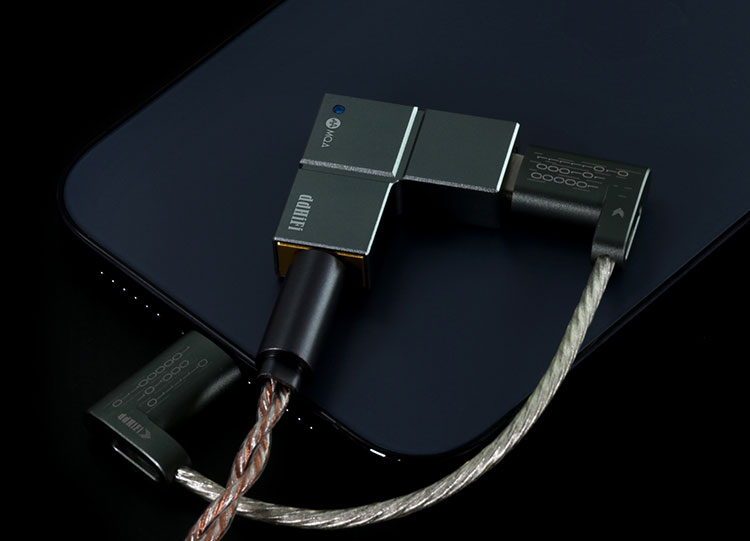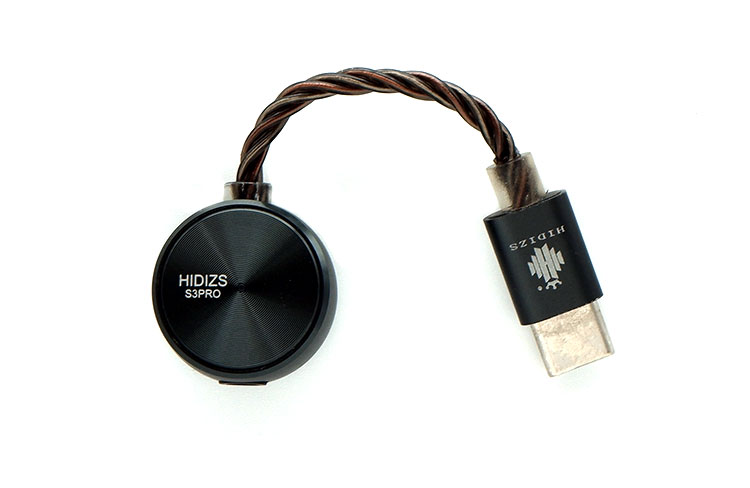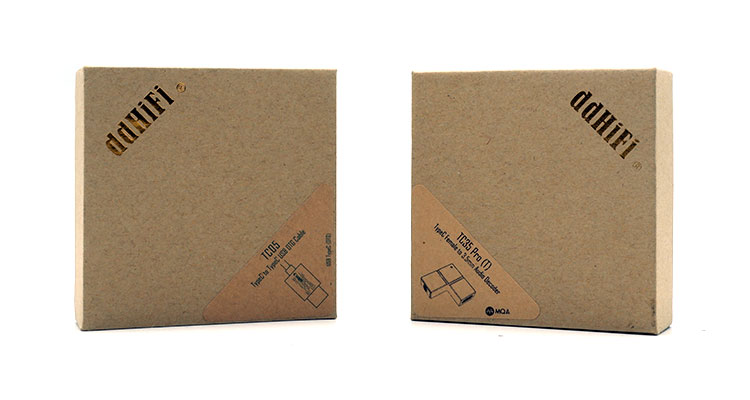Synergy
Power
Based on power numbers, the TC35 Pro is on the lower power side. Despite automatically shifting from low gain to high gain automatically based on the headphone’s impedance, the TC35 Pro is strictly limited to less power-hungry loads.
Despite having low power numbers, I simply had to try the TC35 Pro with some of my full-sized headphones. I started it out with my Audeze LCD-X, which is known for being one of the least demanding planar headphones in the market.
Despite that, the TC35 Pro wasn’t able to drive the LCD-X, with me having to crank up the volume to maximum to reach decent listening levels.
Moving over to the Austrian Audio Hi-X55, which is a medium sensitivity dynamic driver headphone, the TC35 Pro can drive it to louder levels. However, there is a notable drop in the bass, indicating to me that the TC35 Pro might be running out of steam as it tries to achieve the volume I was pushing it to.
With my IEMs though, it’s a different story, the TC35 Pro easily drove most of my IEMs. With the Mangird MT4, I never had to go beyond 30% for my tolerable listening levels.
The iBasso IT00 only needed 20% for my maximum levels, whereas the FiiO FD3 needed around 40% to reach my comfort levels. This shows that the TC35 Pro easily drives most IEMs.

Pairings
I figured that the TC35 Pro has a slight warmth while remaining relatively neutral. So I tried the FiiO FD3, and I enjoyed the pairing initially. However, the warmth of the TC35 Pro compounded with the FD3’s warmer tilt, making it too much of a good thing. This combination is interesting in that it creates a warmer sound while having an impressively wide soundstage presentation.
One of the leaner IEMs that I’ve listened to so far is the iBasso IT00, so I figured that the TC35 Pro would balance it out. While the blend of the tonality of the TC35 Pro with the IT00 creates an overall neutral response, the richer presentation of the TC35 Pro still makes the pairing a bit too slow to be natural.
Finally, I plugged in the Mangird MT4, which has an overall neutral tonal balance while the drier presentation being the only thing that I nitpick on. To my ears, this pairing created a synergistic balance of a slightly warmer tonality while allowing for the shimmer to peek through while having a euphonic but natural vocal presentation.
Select Comparisons
Audioquest Dragonfly Red
$199
Technical
The Dragonfly Red is a much older DAC, but similarly runs a Sabre DAC chip in the ESS9016. However, Audioquest capped out the Dragonfly Red’s decoding capabilities to 24/96kHz, while having MQA decoding capabilities.
Even if ESS DACs are typically capable of DSD decoding, the one on the Dragonfly Red is limited to not having any DSD decoding capabilities.
The headphone output section of the Dragonfly Red is conveniently rated at 2.1v which means that it can also double as an output to an even more powerful amplifier section.
Both DACs are limited to single-ended output only, so they both have a 3.5mm TRS jack for their outputs. For headphone outputs, the Dragonfly Red can put out around 130mW into 32Ω, which is double that of the TC35 Pro’s output capabilities.
Design
Being a comparatively more dated DAC, the Dragonfly Red has a more traditional form factor, being housed in what looks like a shiny old-school flash drive. While both DAC’s have the same input and output options, being that they both only have 1 USB input, and a single-ended output, the Dragonfly Red has a much more traditional USB A input interface.
When holding the Dragonfly Red, it feels substantially denser. When I weighed them the TC35 Pro with the short cable weighs in at 13g, while the Dragonfly Red weighs 23g.
While both devices are equally portable, the Dragonfly Red is a bit bulkier and would take up more space in an IEM case where space is at a premium.
Both DACs also indicate the sample rate using lights, but the Dragonfly Red’s light is much larger and in the shape of a dragonfly. Also, the lights on the Dragonfly Red indicate a specific sample rate, instead of indicating a range of sample rates. The indication for MQA is the same for both, so they both show a pink light when MQA is playing through them.
Performance
The Dragonfly Red has an overall smooth presentation, and that quality holds true from the bass all the way up to the treble. When listening to the bass, the Dragonfly Red is flatter overall, while having a more glossed presentation.
So listening to drums and bass guitars on the Dragonfly Red are smoothed over while maintaining looser control over the driver, making drum hits sound a bit like a splat. However, the weight behind each note is simply more prominent without being bloated.
The vocal range is generally more forward with the Dragonfly Red while having an airier vocal presentation while the vocal texture is more glossed over.
Acoustic instruments have an overall sweeter, and brighter tilt while maintaining body and control over each instrument. When it comes to separation between the vocalist and the instruments, the Dragonfly Red is blurrier, with more compressed imaging.
Both DACs have a sparkly treble response, but the Dragonfly Red is brighter in comparison. However, when it comes to the air frequencies, the Dragonfly Red is more rolled-off comparatively. When I listen to cymbals, the Dragonfly Red takes the edges of cymbal hits and makes them a bit smoother to stay away from being glaringly bright.
Hidizs S3 Pro
$69
Technical
The S3 Pro is another mini dongle DAC with MQA support, it also runs on a DAC chip from Sabre in the ESS 9281C Pro chip, which is in the same series as the 9281AS in the TC35 Pro. While both DACs support MQA, the S3 Pro’s decoding capabilities max out at 32/384kHz and DSD128, which is still sufficient to decode most of the files that are available today.
With these dongle DACs, power can be a limiting factor due to the availability through the USB C ports. However, the S3 Pro manages to squeeze out even less power at 55mW into 32Ω. In reality, the power output on both DACs is practically the same level, and they are virtually level matched when they are set at the same volume %.
Input and output options are essentially the same with both DACs. Both have USB C inputs, and a single-ended 3.5mm jack at the output.
Design
Aesthetically, these DACs are very similar in that there is a short USB C cable hanging out of the main body of the DACs. However, the cable on the S3 Pro is about 1.5” shorter, while being permanently attached to the DAC.
The body of the S3 Pro is also much smaller, making it even more portable. At 6g, the S3 Pro is about half the weight of the Tetris form factor of the TC35 Pro. Both DACs are extremely light though, so I doubt they can get in the way when being carried around or attached to your phone.
With similar finishes, both DACs seem to resist scratches and dings equally well. With the cable on the S3 Pro though, I’m left wanting, since it’s braided without an outer cover, which leaves me a bit worried that one of the wires might get snagged while in use.
Both DAC’s also utilize a small LED to indicate the sampling rate. Interestingly, both DACs LEDs turn pink when playing MQA files, so I’m guessing that pink might be sort of a standard color for MQA playback?
However, the S3 Pro’s indicators are more limited since a red light indicates Redbook CD formats, and the indicator for the other formats is blue.
Performance
Both DACs have a similarly elevated bass shelf, which gives them an overall warmer tonal characteristic. However, when it comes to the overall girth of each note, the S3 Pro sounds skinnier.
With drum hits and percussive strikes, the S3 Pro is a step slower, making each drum hit sound less immediate and natural. Surprisingly though, the S3 Pro also has a slower decay, which can make things sound a bit drier in comparison.
The midrange is equally forward between the 2 DACs, but the S3 Pro sounds more glossed over comparatively. Fundamental notes of instruments such as guitars and pianos are also less prominent, and consequently more blurred. Piano tones are also less sustained, which makes classical piano music sound less connected with the S3 Pro.
When it comes to cymbal hits, each hit sounds crystalline but comparatively splashier and less controlled. This in turn leaves cymbal hits with less bite and edge. While they both have a good amount of treble extension, the images are simply more blurred together and less separated with the S3 Pro.
Our Verdict
With ddHiFi being a relatively new company, it has made strides to make its mark by producing great value products at reasonable prices.
With ddHiFi having a background in producing cables and accessories, it’s no surprise that the TC35 Pro is built robustly while having sensible packaging solutions and accessories. It also helps that ddHiFi gives the user the choice of form factors for the TC35 Pro.
While the TC35 Pro doesn’t have gobs of power, it’s evident that it’s simply designed for portability, and for IEMs.
Sonically, the TC35 Pro doesn’t stick to being strictly neutral. Instead, ddHiFi opted to create a warmish, and rich DAC, that maintains a quick pace and a natural sense of space that will bring out the potential in most IEMs.
Technical Specifications
- DAC chip: ES9281AC PRO
- Frequency response: 0.032dB@20Hz-40kHz
- Output power: ≥30mW (16Ω); ≥62mW (32Ω); ≥7mW (600Ω)
- SNR: -118dB
- THD+N: 0.0004%
- Sampling rates: Supports up to 32bit/768kHz
- Native DSD: Supports up to DSD512
- Weight: 5.8g
- Dimensions (excl. the plug): 30 x 14.8 x 7mm, cable length 6cm




